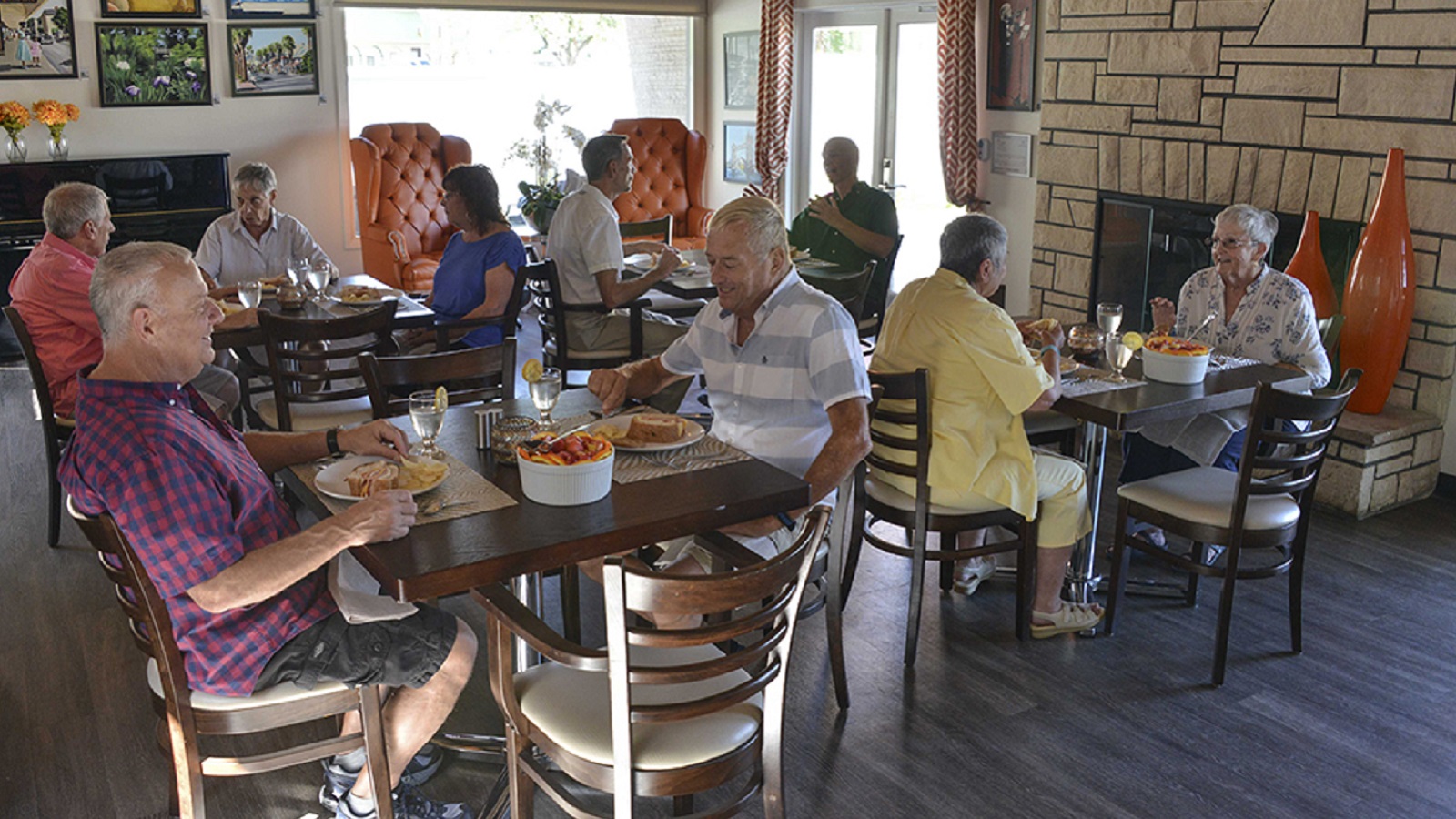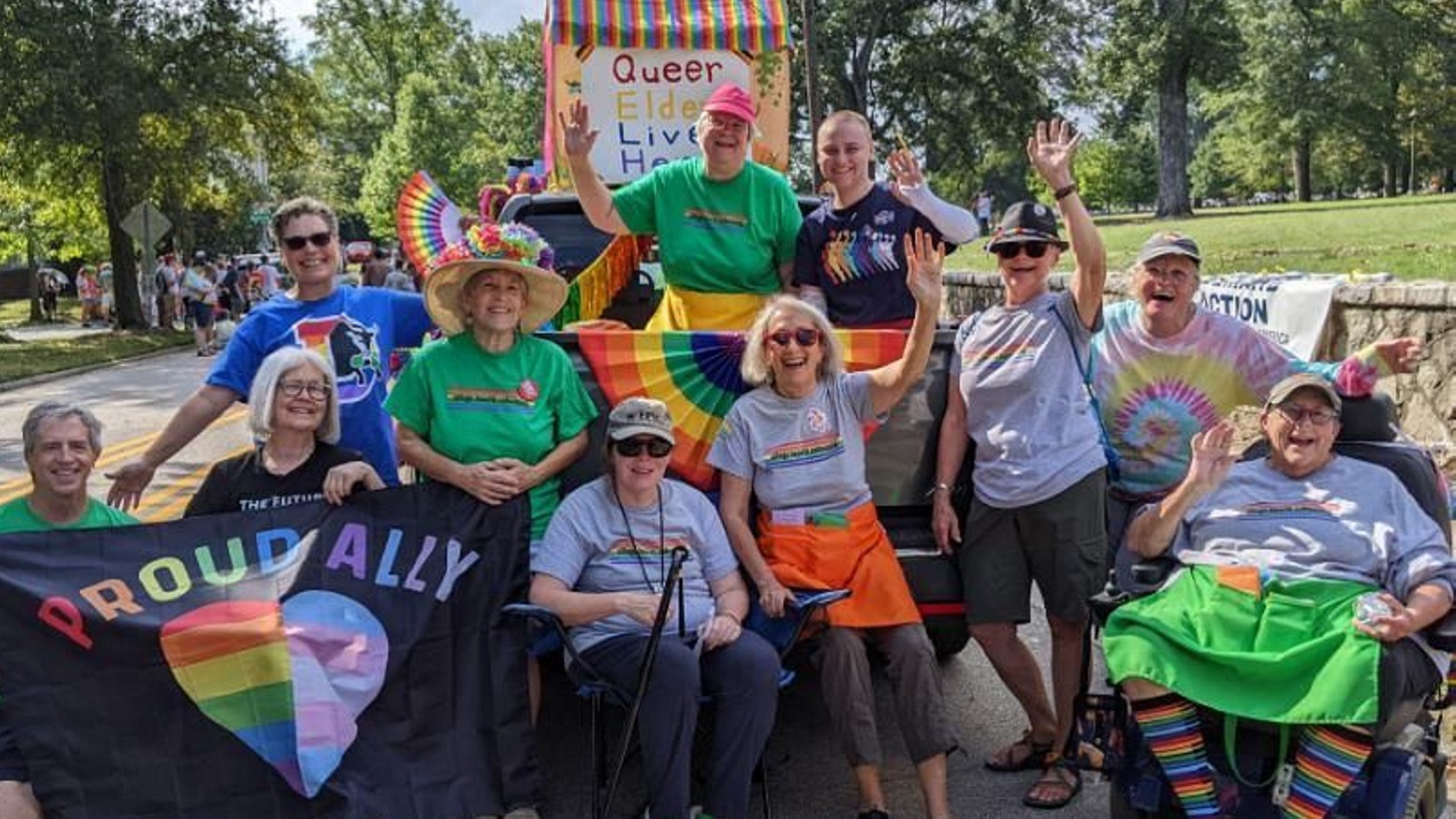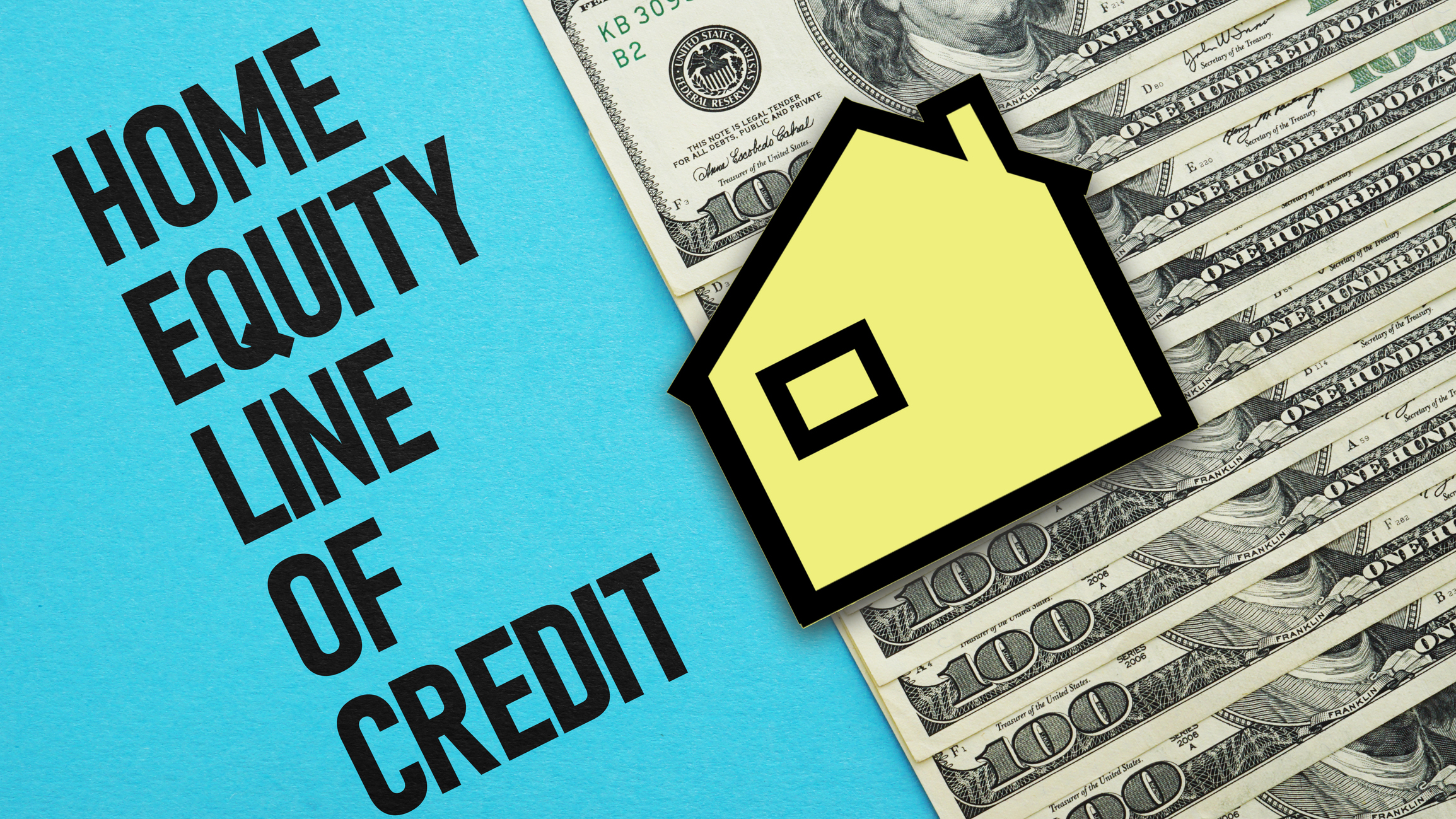Retirement Reimagined: Finding Your Tribe in LGBTQ-Focused Communities
Demand for LGBTQ retirement communities in the U.S. is high, but inventory is not easy to find. Here are some safe havens to explore.


The Stonewall riots that marked the beginning of the modern gay rights movement erupted in 1969, more than 55 years ago, and yet so much of LGBTQ life is uncharted territory.
That includes finances, aging and retirement. The loss of so many gay men from the AIDS crisis robbed the community, and the world, of so much, including role models and examples of how to manage the social, financial and physical effects of aging.
Many Gen Xers who were born during the Stonewall era are just now contemplating what retirement will mean for them, and the roadmap barely exists.
From just $107.88 $24.99 for Kiplinger Personal Finance
Become a smarter, better informed investor. Subscribe from just $107.88 $24.99, plus get up to 4 Special Issues

Sign up for Kiplinger’s Free Newsletters
Profit and prosper with the best of expert advice on investing, taxes, retirement, personal finance and more - straight to your e-mail.
Profit and prosper with the best of expert advice - straight to your e-mail.
Many of the boomers who came before them not only couldn’t live openly as they were, but for most of their lives, they lacked many of the legal protections and opportunities — in employment, housing, survivorship, marriage, children — that can facilitate a less stressful retirement.
The fact that marriage equality and gay couples raising children are such new phenomena — witness the high-profile novelty of former U.S. Transportation Secretary Pete Buttigieg and his husband Chasten marrying, then adopting and raising twins — only underscores the fact that the later chapters of life for the LGBTQ community are often full of ambiguity and anxieties that are unique to this population.
The organization SAGE advocates on behalf of LGBTQ+ seniors, and in 2023, it trained more than 46,000 staff at 576 organizations around the country, according to the Associated Press. But that’s a drop in the bucket compared with what LGBTQ seniors need.
“We have a long way to go in terms of getting to the point where nursing homes, assisted living and other long-term care providers are prepared for and ready to provide appropriate and welcoming care to trans elders,” Michael Adams, SAGE’s CEO, told the AP. That observation applies to the LGBTQ elder community landscape in general.
“There’s a huge demand, but there aren’t that many [LGBTQ communities],” says Bonnie J. McGowan, the founder of Birds of a Feather in New Mexico. “I get inquiries all the time.”
She remembers attending a SAGE meeting in New York in 1995, the purpose of which was to gauge interest in developing LGBTQ retirement communities.
“Only two of us ever created what our vision was,” McGowan says. She was one. The other founder’s community, Rainbow Vision, went bankrupt during the Great Recession, a sad example (one of many) of how difficult it is to make a go of an LGBTQ retirement community.
Nevertheless, over-55 communities catering to LGBTQ people — whether exclusively LGBTQ or LGBTQ-friendly — do exist, though they're relatively rare nationwide. (The Fair Housing Act states that you can’t legally exclude straight people, and some communities are home to allies and mixed LGBTQ and non-LGBTQ households).
LGBTQ elders want the same things that younger members of the community desire — acceptance, safety and to be relieved of the burden of coming out all over again.
Here are some safe havens.
Stonewall Gardens, Palm Springs, California

Residents at Stonewall Gardens in Palm Springs, CA.
“We are truly the only LGBT-focused assisted living facility that’s currently running in the country,” says Brian Trout, the marketing director who also works in resident support at Stonewall Gardens. (He notes that other such facilities have gone “mainstream” to survive).
Trout says that Stonewall Gardens offers 24-hour care (for those needing help dressing, walking and showering, for example), in addition to independent living residents who don’t have any care needs at present, but want to age in place.
“Our resident pool is predominantly gay male, but we welcome everybody,” Trout says.
Though Palm Springs has a large gay population, Trout notes that Stonewall Gardens was the first local retirement community to fly the rainbow flag — then he noticed that others were following.
“They know what side their bread is buttered on,” he says.
In addition to the converted midcentury hotel property where the 27 residents live, Stonewall Gardens features a café, walking paths and manicured gardens, and it offers a social life located near downtown Palm Springs.
“It feels like a resort,” Trout says. “We usually maintain a waitlist, and we draw people from all over the country.”
Village Hearth Cohousing, Durham, North Carolina

Residents at Village Hearth Cohousing in Durham, NC.
“It was self-interest,” says Pat McAulay of being an original member and homeowner at Village Hearth Cohousing, “because we didn’t want to end up in a nursing home and have to go back into the closet.”
McAulay moved into Village Hearth, a new build that contains seven buildings in groups of four, five years ago. (The largest units are on the ends, with wraparound porches.)
“As far as senior cohousing communities go, we are the only LGBT-focused community in the U.S. that we're aware of,” she says. “It's a very niche market, of course. Cohousing itself — maybe there are as many as 200 in the country, and as far as senior cohousing, maybe around 20.”
The cohousing concept carries a non-hierarchical whiff of the Sixties: McAulay describes the category as “an intentional community where people come together to be good neighbors. We make decisions together, and everybody is on the board, which isn’t always the case [in a cohousing facility], but it is in our case. We listen to everyone’s voice and everyone’s opinion, and we do things for the benefit of the community rather than for the individual.”
The independent living community welcomes both the LGBTQ community and its allies, and features a large gourmet kitchen, a multipurpose dining room, office, laundry, exercise room, even a dog park.
Birds of a Feather Community, Pecos, New Mexico
“When I was younger, many, many years ago,” recalls Birds of a Feather founder Bonnie J. McGowan, “it was kind of a common theme at parties for lesbians to say, ‘What are we going to do when we get old, and where are we are going to live?’”
One friend of McGowan’s was preoccupied with the subject, even in her early thirties. The friend died young, but she’d planted the seed in McGowan.
Birds of a Feather broke ground in 2004, becoming one of the first gay, lesbian and trans communities in the country, with a mix of singles and couples. With financing hard to come by, “I self-funded,” McGowan says, “which I think contributed to its success.”
Birds of a Feather contains 44 lots, from a quarter-acre to three-plus acres; the last one sold three years ago. Several homes are currently under construction.
A big draw is proximity to Santa Fe, which is a 30-minute drive away. Hiking and fly fishing are popular outdoor pursuits.
Other LGBTQ-focused communities to explore
- Fountaingrove Lodge, Santa Rosa, California
- A Place for Us, Cleveland, Ohio
- Palms of Manasota, Palmetto, Florida
- Rainbow Vista, Gresham, Oregon
- The Resort on Carefree Boulevard, Fort Myers, Florida
Related content
Profit and prosper with the best of Kiplinger's advice on investing, taxes, retirement, personal finance and much more. Delivered daily. Enter your email in the box and click Sign Me Up.

Drew Limsky joined Kiplinger Digital as a freelance retirement writer because he believes that every day offers opportunities to make better financial decisions, and that it’s never too late to learn how to enhance your financial position and lifestyle. Drew is the former editor of Lexus magazine, Cadillac magazine, South Florida Business & Wealth, Business Jet Traveler, Interiors South Florida, and Mariner (for Holland America). Drew’s writing credits include The Wall Street Journal, New York Times, LA Times, Washington Post, Boston Globe, Yahoo, Worth, AD, Robb Report, Metropolis, Men’s Journal, and Business Insider. An Emory grad, Drew earned his JD and PhD at NYU, and lives in Miami Beach, Brooklyn, and Cape Cod.
-
 December Fed Meeting: Live Updates and Commentary
December Fed Meeting: Live Updates and CommentaryThe December Fed meeting is one of the last key economic events of 2025, with Wall Street closely watching what Chair Powell & Co. will do about interest rates.
-
 This Is Why Investors Shouldn't Romanticize Bitcoin
This Is Why Investors Shouldn't Romanticize BitcoinInvestors should treat bitcoin as the high-risk asset it is. A look at the data indicates a small portfolio allocation for most investors would be the safest.
-
 I'm a Federal Benefits Pro: I Answer These 2 Questions a Lot
I'm a Federal Benefits Pro: I Answer These 2 Questions a LotMany federal employees ask about rolling a TSP into an IRA and parsing options for survivor benefits, both especially critical topics.
-
 I'm a Financial Pro Focused on Federal Benefits: These Are the 2 Questions I Answer a Lot
I'm a Financial Pro Focused on Federal Benefits: These Are the 2 Questions I Answer a LotMany federal employees ask about rolling a TSP into an IRA and parsing options for survivor benefits, both especially critical topics.
-
 I Retired at 63 to Enjoy My Free Time but My Grown Kids Want Help With Childcare. I Love My Grandkids but It's Too Much. What Should I Do?
I Retired at 63 to Enjoy My Free Time but My Grown Kids Want Help With Childcare. I Love My Grandkids but It's Too Much. What Should I Do?We asked therapists and relationship experts for advice.
-
 5 RMD Mistakes That Could Cost You Big-Time: Even Seasoned Retirees Slip Up
5 RMD Mistakes That Could Cost You Big-Time: Even Seasoned Retirees Slip UpThe five biggest RMD mistakes retirees make show that tax-smart retirement planning should start well before you hit the age your first RMD is due.
-
 I'm a Wealth Adviser: My 4 Guiding Principles Could Help You Plan for Retirement Whether You Have $10,000 or $10 Million
I'm a Wealth Adviser: My 4 Guiding Principles Could Help You Plan for Retirement Whether You Have $10,000 or $10 MillionRegardless of your net worth, you deserve a detailed retirement plan backed by a solid understanding of your finances.
-
 A Retirement Triple Play: These 3 Tax Breaks Could Lower Your 2026 Bill
A Retirement Triple Play: These 3 Tax Breaks Could Lower Your 2026 BillGood news for older taxpayers: Standard deductions are higher, there's a temporary 'bonus deduction' for older folks, and income thresholds have been raised.
-
 10 New Year's Resolutions for Retiring Next Year
10 New Year's Resolutions for Retiring Next YearThese New Year's resolutions will help you retire in 2026 with confidence in your financial strategy.
-
 How Much Would a $50,000 HELOC Cost Per Month?
How Much Would a $50,000 HELOC Cost Per Month?Thinking about tapping your home’s equity? Here’s what a $50,000 HELOC might cost you each month based on current rates.
-
 Think You Know How to Be Happy in Retirement? These 9 Stats May Surprise You
Think You Know How to Be Happy in Retirement? These 9 Stats May Surprise YouWhen it comes to your retirement happiness, don't believe everything you hear. We've turned to solid research for the facts on finding your bliss in retirement.